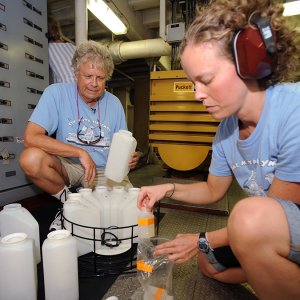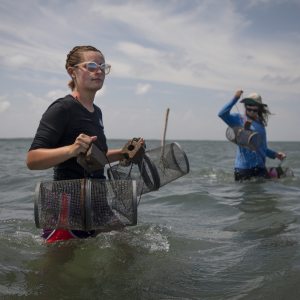Understanding the growing threatHans Paerl, Kenan Professor of Marine and Environmental Sciences, analyzed records on tropical cyclones and rainfall kept since 1898 to understand how climate change has impacted storms. His research discovered that storms are becoming more frequent and wetter — changing the ways hurricanes are affecting our communities and, ultimately, how the state needs to prepare.
A resilient
North Carolina
Preparing our state for hurricanes
North Carolina is one of the states most susceptible to hurricanes. With a coastline that juts out into the Atlantic, the state is like a catcher’s mitt, catching the storms as they move north. And as climate change transforms the environment, the threat of hurricanes continues to grow.
At the University of North Carolina at Chapel Hill, researchers are helping the state prepare for the powerful storms by better understanding the increasing threats and challenges incurred by hurricanes — from storm surge and flooding to water quality and beach erosion.
We tend to be one of the higher hurricane impacts of any state in the country. The coast is very low and very flat, so if we do get hit by a storm, we’re very susceptible to flooding.
Rick Luettich, director of the UNC Institute of Marine Sciences

The area where you actually have a mixture of freshwater and saltwater is expanded inward into all these rivers and creeks and streams. So, areas where people normally wouldn’t be exposed could become exposed to these dangerous vibrios bacteria.
Rachel Noble, Mary and Watts Hill Jr. Distinguished Professor

A growing threat
Hurricane season may run from June to November, but UNC-Chapel Hill researchers work year-round to prepare and protect our state's communities and natural habitats.
Their research prepares for the unknown by examining what new hurricane trends may mean for North Carolina, exploring the ways they can leave a lasting mark on the state's ecosystems and economy, and helping communities evaluate their vulnerabilities.
Click on a story to learn more about a researcher


Protecting North Carolina's seagrassNorth Carolina is home to extensive seagrass meadows, creating a dynamic habitat that supports vibrant wildlife like snapper, blue crabs and shrimp. As more hurricanes strike our coast, researchers at the Institute of Marine Sciences are taking a closer look to see how resilient the critical seagrass meadows are.

Center for Resilient Communities and EnvironmentThe Center for Resilient Communities and Environment is working with North Carolinians to understand the state's vulnerabilities to natural stressors and help them develop strategies to strengthen their community’s resilience to save lives and property.
When hurricanes do impact our communities, Tar Heels are ready to keep North Carolinians safe during the threat and help support recovery.